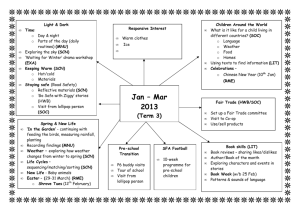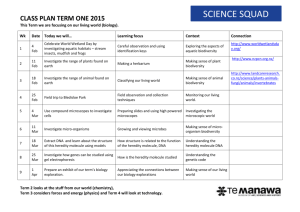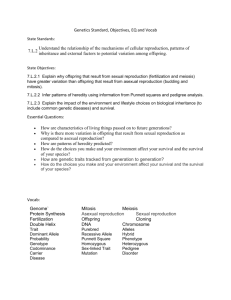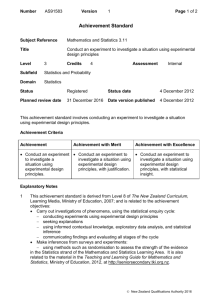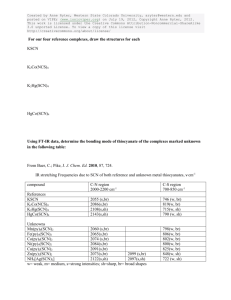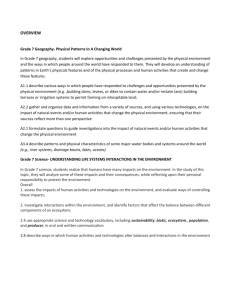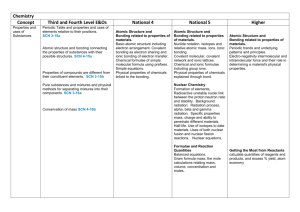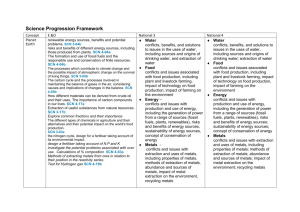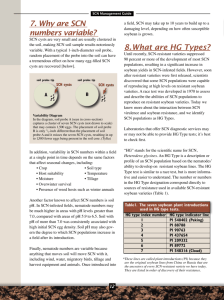Syllabus Schedule Subject Biology Year Group S3
advertisement
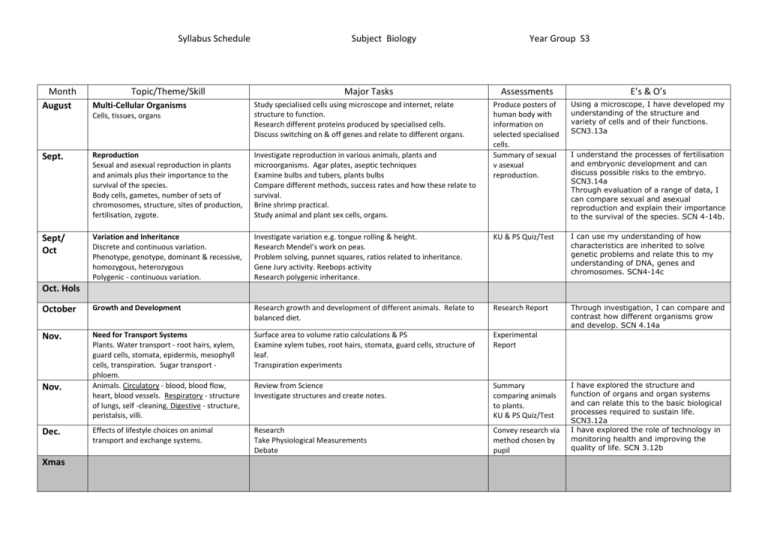
Syllabus Schedule Month August Topic/Theme/Skill Subject Biology Major Tasks Year Group S3 Assessments E’s & O’s Produce posters of human body with information on selected specialised cells. Summary of sexual v asexual reproduction. Using a microscope, I have developed my understanding of the structure and variety of cells and of their functions. SCN3.13a Cells, tissues, organs Study specialised cells using microscope and internet, relate structure to function. Research different proteins produced by specialised cells. Discuss switching on & off genes and relate to different organs. Sept. Reproduction Sexual and asexual reproduction in plants and animals plus their importance to the survival of the species. Body cells, gametes, number of sets of chromosomes, structure, sites of production, fertilisation, zygote. Investigate reproduction in various animals, plants and microorganisms. Agar plates, aseptic techniques Examine bulbs and tubers, plants bulbs Compare different methods, success rates and how these relate to survival. Brine shrimp practical. Study animal and plant sex cells, organs. Sept/ Oct Variation and Inheritance Discrete and continuous variation. Phenotype, genotype, dominant & recessive, homozygous, heterozygous Polygenic - continuous variation. Investigate variation e.g. tongue rolling & height. Research Mendel’s work on peas. Problem solving, punnet squares, ratios related to inheritance. Gene Jury activity. Reebops activity Research polygenic inheritance. KU & PS Quiz/Test I can use my understanding of how characteristics are inherited to solve genetic problems and relate this to my understanding of DNA, genes and chromosomes. SCN4-14c October Growth and Development Research growth and development of different animals. Relate to balanced diet. Research Report Through investigation, I can compare and contrast how different organisms grow and develop. SCN 4.14a Nov. Need for Transport Systems Plants. Water transport - root hairs, xylem, guard cells, stomata, epidermis, mesophyll cells, transpiration. Sugar transport phloem. Animals. Circulatory - blood, blood flow, heart, blood vessels. Respiratory - structure of lungs, self -cleaning. Digestive - structure, peristalsis, villi. Surface area to volume ratio calculations & PS Examine xylem tubes, root hairs, stomata, guard cells, structure of leaf. Transpiration experiments Experimental Report Review from Science Investigate structures and create notes. Summary comparing animals to plants. KU & PS Quiz/Test Effects of lifestyle choices on animal transport and exchange systems. Research Take Physiological Measurements Debate Convey research via method chosen by pupil Multi-Cellular Organisms I understand the processes of fertilisation and embryonic development and can discuss possible risks to the embryo. SCN3.14a Through evaluation of a range of data, I can compare sexual and asexual reproduction and explain their importance to the survival of the species. SCN 4-14b. Oct. Hols Nov. Dec. Xmas I have explored the structure and function of organs and organ systems and can relate this to the basic biological processes required to sustain life. SCN3.12a I have explored the role of technology in monitoring health and improving the quality of life. SCN 3.12b Syllabus Schedule Subject Biology Year Group S3 Jan. Controversial Procedures Investigate/debate e.g. gene therapy, pharming, transgenic animals and plants. Jan/Feb Control & Communication Homeostasis - body temperature Nervous Control - structure CNS, brain. Reflex Action Hormonal Control - Endocrine glands, receptor cells, blood glucose regulation. Investigate effect of external temp. on core body temp. Investigate density of touch receptors on in skin. Research reflex actions. Research role of hormones in the body. KU & PS Quiz/Test Feb. Diabetes Research causes of diabetes. Research Report Feb. - June Propagating and growing plants. Take cuttings, plant seeds, pot on seedlings, care for plants, plant out plants. Investigate effects of conditions and nutrients on plant growth. Produce plants. Explain methods used. March Photosynthesis - requirements, limiting factors Starch tests. Elodea/immobilised algae/carbon dioxide probe experiments. Design Experiment. KU & PS Quiz/Test March Commercial uses of plants Investigate increased yields of crops/fuel/medicines via pharming. Investigate a variety of uses of plants Create poster Review and Revise End of Unit Test Research examples of adaptations. Experiment - reacting to stimuli - choice chambers. Exp/Research examples of learned behaviour. Experimental Report Review course and Revise End of course test Feb. Debate I can debate the moral and ethical issues associated with some controversial biological procedures. I can explain how biological actions which take place in response to external and internal changes work to maintain stable body conditions. SCN 4.12a Feb. Hols March I have propagated and grown plants using a variety of different methods. I can compare these methods and develop my understanding of their commercial use. SCN4.02a Through exploring the carbon cycle, I can describe the processes involved in maintaining the balance of gases in the air, considering causes and implications of changes in the balance. SCN 4.05b By contributing to an investigation on different ways of meeting society's energy needs, I can express an informed view on the risks and benefits of different energy sources, including those produced from plants. SCN 4.04a Easter April May May Life on Earth Adaptations & learned behaviour for survival. Through investigation, I can explain how changes in learned behaviour due to internal and external stimuli are of benefit to the survival of species. SCN 4.12b

